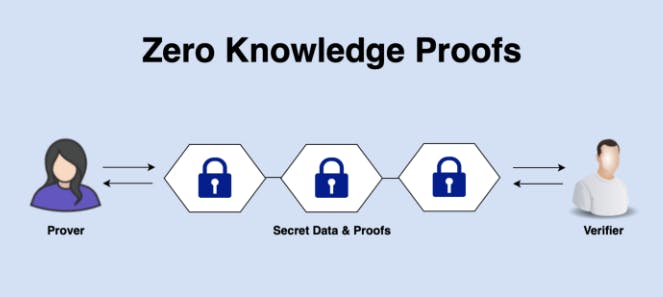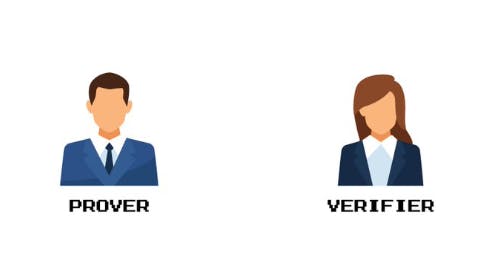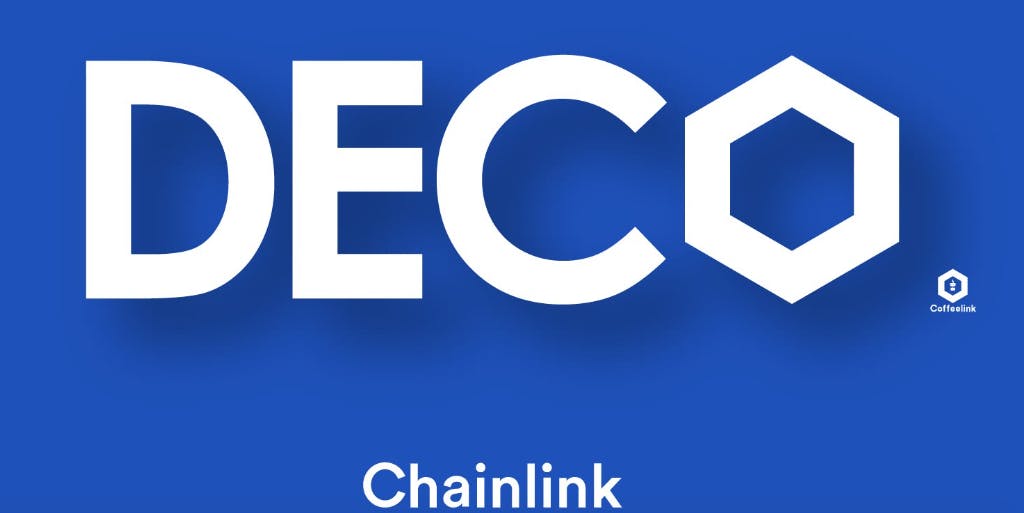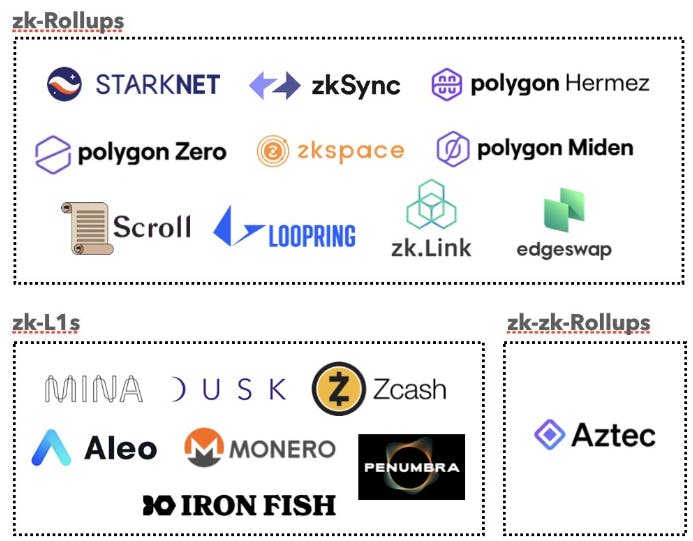They’ve been round for years and but it’s solely now with the emergence of decentralized blockchain networks that zero information (ZK) proofs have lastly achieved a possible actual world use case. So what are they and what are their implications for privateness in crypto?
What are ZK proofs?
The origins of ZK proofs date again to a research paper revealed in 1985. On the time, the MIT analysis staff termed ZK proofs as “these proofs that convey no further information aside from the correctness of the proposition in query.” Put within the context of a cost, it’s a way for one occasion to a transaction to show to the opposite occasion that the transaction has occurred and is authentic with out revealing further data.

2 years later the breakthrough was mentioned in a New York Occasions article titled “New method to guarding secrets and techniques developed.” And for an age, that was as far ZK proofs went. For years the analysis did not seize anybody’s creativeness because it merely hadn’t discovered something in the best way of a sensible use case.
The dearth of software program tooling, quick {hardware}, and various choices prevented ZK proofs from going mainstream. Quick ahead to latest years and the emergence of blockchain has lastly given ZK proofs the lease of life that they have been at all times deserving of. That is just like how advances in computing and software program have enabled neural networks to flourish, though the algorithms had been round for some time.
Privateness-centric cryptocurrency Zcash was the primary blockchain to include ZK proofs as a mechanism to take care of the privateness of a transaction on the community.
Bitcoin and most different blockchains have each the profit and Achilles heel of publicly clear transactions. But for many, it goes too far. Most individuals would like that no person is aware of what they paid somebody or how a lot they paid them. No person of their proper thoughts would publicly publish their checking account steadiness, but anybody can search for that data for a given pockets deal with on a blockchain explorer.
How ZK proofs work
At a elementary degree, ZK proofs contain two events to a transaction, a verifier and a prover. The verifier requires the prover to carry out a particular process which might solely be attainable if the prover had information of a pockets’s personal keys. The prover doesn’t reveal the personal key itself, simply related information.

On this method, it offers a mechanism by which solely probably the most important data is revealed. In any other case, the person’s privateness is maintained whereas each events can belief within the transaction having been accomplished.
There are three important properties of a ZK proof:
-
Completeness: The declare must be irrefutable and the completeness of a ZK proof sees to it {that a} prover is sincere.
-
Soundness: If the declare is disingenuous, the percentages of the declare persuading the verifier that it’s real are slim. The verifier will reject the ZK proof if the declare is unfaithful.
-
Zero Information: Within the case of an correct declare, the one data that the verifier receives is that the declare is legitimate. Information that’s in any other case not related to the transaction stays personal.
However how does the zero information side of this proof system work in a sensible sense? Cryptography isn’t the simplest factor on the planet for many people to know and so, some researchers thought up an instance based mostly across the puzzle ebook, ‘The place’s Waldo?’ again in 1999.

Let’s say that the verifier desires to exhibit to the prover that he/she is aware of the place Waldo is on an illustrated drawing. The verifier doesn’t wish to reveal his precise location inside the drawing or another data. The illustration is roofed with a sheet of cardboard with a tiny cutout in it.
The verifier aligns the cutout with Waldo after which exhibits this to the prover. The train proves that the verifier has discovered Waldo with out revealing any additional data. The verifier might have simply acquired fortunate and so the train is repeated. Each time it’s repeated with the verifier demonstrating that he/she has discovered Waldo, the percentages of this having occurred by probability scale back finally to some extent the place such an prevalence is statistically unlikely.
That’s a tough instance of how a ZK proof works. Making use of it to a wise contract, there are all method of particulars inside a wise contract that one occasion will not be eager on revealing.
ZK proof adoption inside the Ethereum ecosystem
Whereas ZK proofs could have began out in blockchain with networks similar to Zcash, their use has actually exploded inside the Ethereum ecosystem as builders attempt to resolve for scalability. Ethereum in its present type doesn’t scale, leading to exorbitant transaction charges, along with transaction pace and throughput limitations.
Scaling has been the first motivator however privateness isn’t far behind as a consideration. Numerous types of ZK proofs are being applied on Ethereum layer 2 chains similar to Polygon. As with the whole lot in life, additionally they include disadvantages. They don’t have nice help in the case of the Ethereum Digital Machine (EVM). Moreover, there’s a computational overhead which could be tough to account for.
With that, builders within the blockchain area are additionally constructing out methods based mostly on optimistic roll-ups. Naturally, they too include their very own deserves and demerits. It’s a topic that’s deserving of an article all of its personal so we received’t stray any additional into the realm of optimistic proofs right this moment, notably on condition that they don’t carry with them the identical privateness achieve that ZK proofs do.
Privateness important for additional DeFi adoption
In a recent interview, Sergey Nazarov, Co-founder of the Chainlink community, underscored simply how necessary a task ZK proofs will play. Chainlink is an oracle community constructed on Ethereum that enables blockchain networks to work together with actual world knowledge.
It’s not simply people who would stand to learn from larger privateness inside blockchains. Nazarov recognized the dearth of privateness in present blockchain networks as being a barrier to entry for a lot of companies when contemplating getting concerned in DeFi. A core downside for enterprises is how can contract particulars be saved personal?

Nazarov believes the answer is to do the computation outdoors of the chain however present the proof of the end result of the off-chain computation on the chain. He cites ZK proofs as being key to offering a degree of privateness to permit the establishments to enter and take part in DeFi in a major method.
For an establishment, there should still be sensitivity by way of who carries out such an off-chain computation with their knowledge. Nonetheless, will probably be attainable for the establishment to pick out a particular node to hold out that computation.
With the node having being chosen by the establishment on the premise that the establishment decides that it will probably belief that third occasion, privateness is preserved. Chainlink has already enabled this ZK proof-driven privateness characteristic by its DECO product.
Future outlook
The usage of ZK proofs inside the blockchain enviornment has been a latest improvement and one that’s build up appreciable momentum. In a latest tweet, Soona Amhaz, Managing Associate at crypto-native enterprise capital agency Volt Capital, cited the large-scale analysis and improvement being utilized to the appliance of zero knowledge-based implementations inside crypto as one among quite a lot of optimistic indicators sooner or later improvement of the sector.

Ethereum co-founder Vitalik Buterin believes that whereas ZK roll-ups utilizing validity proofs is an early stage expertise, improvement will proceed, with this method prone to win out over optimistic roll-ups over the medium to long run.
Varun Shenoy, companion at enterprise capital agency Opposite, echos this sentiment. In a latest tweet he said that ZK proofs are simply taking off and that they’ll revolutionize how we take into consideration privateness and scaling computation.
Whereas we primarily affiliate ZK proofs with Zcash and the Ethereum ecosystem in crypto, it is much less well-known that Bitcoin creator Satoshi Nakamoto had pondered methods to incorporate ZK proofs as early as 2010. Work by ZK roll-up analysis John Mild means that consideration relative to Bitcoin continues. In a latest report, Mild concludes that validity rollups (an utility associated to ZK proofs) may very well be a great match for Bitcoin and is deserving of extra analysis, experimentation and statement. Pursuing this expertise might unearth new capabilities for Bitcoin by way of privateness and transaction throughput in addition to help for extra expressive sensible contracts.
Whereas the whole lot is fluid and formative within the blockchain area proper now, it actually looks as if we’re prone to be listening to extra about ZK proofs as improvement progresses. With ZK proofs of their ascendency at the exact same time as decentralized identification, the restoration of privateness stands a preventing probability.









